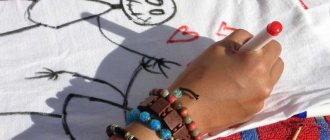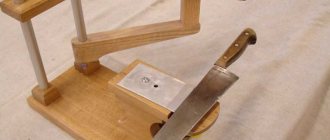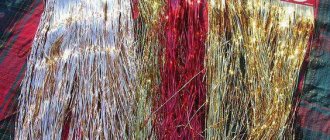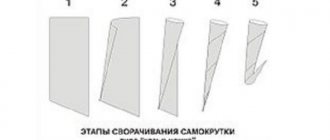A seal made of sealing wax looks interesting and attractive; nowadays it is used as a master’s seal, for decorating envelopes, scrapbooking, etc. If you are a lover of handicrafts, then you would probably like to have your own seal, which you can use as your own sign. We have found for you a master class on how to create a wax seal at home. This master class is more suitable for already experienced craftswomen who know how to work with materials and tools.
History of the use of sealing wax
Before you create sealing wax with your own hands, you need to understand what it is. Sealing wax is a fusible mixture of resins and various impurities, which is used as a basis for shaped imprints on parcels, letters, gifts, etc.
Sealing wax appeared in India, but gradually, thanks to its functionality, moved to Europe. Sealing wax seals on scrolls and parcels often appear in paintings and historical films. Since the mid-16th century, this material has been used to seal confidential messages as tightly as possible. Over time, wax seals began to be attached to small boxes, bottles and vials of perfume or oils.
Printing from modeling material
Another material that can be used to create a cool stamp is modeling paste. All you need is to roll out a small, even pancake from the mass, attach a stamp or coin, pressing it down well. And then bake in the oven according to the instructions on the package with the mixture. The print is strong and durable. It is perfect for decorating various products.
This is how easy it is to create a really interesting element for decoration. Have fun creating!
How to make sealing wax at home
Making sealing wax with your own hands at home is not that difficult. There are a lot of step-by-step recipes on the Internet, the main problem of which is the complexity and inaccessibility of the specified ingredients.
The task can be simplified by special kits sold in stores for handicrafts and artists, as well as on the Internet. They contain all the necessary components for making sealing wax. But if you want, it’s easy to assemble such a set yourself. After this, you can begin to create a figured authentic seal.
There is an academic recipe for the most common red (or postal) sealing wax. According to this recipe, mix bleached shellac (110 g), rosin (7 g), talc (3 g), cinnabar (37 g) and turpentine (60 g). But for home production, an easier method is suitable.
To do this you will need:
When making sealing wax, the following sequence of actions should be followed:
In addition to the standard red color, sealing wax comes in blue, yellow, green, brown and black. To give the mixture the desired shade, you can replace the red ocher with another paint or natural dye. To do this, you can use grated charcoal, aquamarine paint, food coloring and aniline dyes.
For further use of sealing wax, it is enough to slightly melt the tip of the bar and pour it onto the place where the threads are folded or intertwined. After this, you can put a stamp and let the print harden.
Of course, making sealing wax at home requires patience and practice. The most important thing in this process is to strictly follow the recipe, maintain proportions, do not overheat the mixture, and ensure its homogeneity. And, just as important, try not to get burned.
Source
How to seal a bottle with sealing wax
So how do you fill a bottle with sealing wax? To use sealing wax at home, you will need a special container for melting lump material (sealing wax) and a heater.
Bottles are sealed with sealing wax as follows:
- The sealing wax melts in the container.
- The border of the lid and neck is sealed with fabric tape.
- The bottle is turned upside down and dipped into the mixture.
- After the excess sealing wax has drained off, the bottle is additionally rotated over the container in a horizontal position.
- The bottle returns to a vertical position (neck up).
- After this, an imprint is placed on it.
Sealing bottles with sealing wax is a fairly simple process and does not require special preparation. This way you can very quickly become the owner of a real signature wine collection.
How to make a wax seal with your own hands? We share our experience and give useful advice
We first encountered the need to apply a wax seal 3 years ago. The client wanted to decorate gift chocolate with sealing wax. And the client’s desire, as we know, is the law...
We bought a bunch of unnecessary (as it later turned out) equipment and got to work. The process went slowly and looked like this. One man was carefully applying wax seals. The second methodically tore them off: the prints turned out crooked and a good half of them were wasted. Of course, we fulfilled the order. But we spent a lot of time, nerves and money.
In general, as expected, the first pancake came out lumpy for us. But the very idea of using wax seals on the packaging of corporate gifts and branded chocolate seemed interesting to us. We started experimenting. And our experiments were crowned with success.
Now we actively use wax seals when decorating chocolate bars and corporate gifts. We learned how to quickly and accurately make prints on various materials: from craft paper to glass and wood. And we decided to share our experience with you. We hope that it will help you make high-quality wax seals at home.
Content:
Homemade sealing wax
Prepare the necessary components and follow the simple instructions.
- Take an iron container (you can use a Turk).
- Pour 50 g of rosin into it.
- Cut 3 cm from the candle and add to the container.
- Add a pinch of chalk.
- Place the Turk (cocotte maker) in a pan of water and turn on the heat.
- Cook until all ingredients are dissolved, stirring constantly with a wooden stick.
- Add ocher to a homogeneous mixture and stir.
- Make a paper tube and place it on the second sheet.
- Carefully pour the liquid ingredients into a paper tube, holding it with your hand in an oven mitt and a plastic bag (to avoid getting burned).
- Hold the tube well, preventing any liquid from leaking.
- After hardening, peel off the paper and use sealing wax using the usual technology.
At home, you can find something to replace sealing wax by making stylish and sophisticated seals on souvenirs and bright packaging. The offered options are affordable, and if you wish, you can make sealing wax yourself.
The word “sealing wax” is familiar to many, but more often than not everyone associates it with parcels and mail. Previously, wax seals kept the secret of correspondence and were a symbol of wealth. Recently, wax seal
is experiencing its rebirth: it began to be used for decorative purposes, when creating the vintage genre.
A beautiful wax seal
looks beautiful on a card, on an invitation scroll, as decoration, etc.
You will need
- – sealing wax;
- – container for melting;
- – wooden stick;
- - seal;
- – fat.
Instructions
1.
Sealing wax is a colored mixture of resins. Sealing wax is available in lumps, with a wick and in granules. Previously, all wax seals were obtained only in chestnut color, but now the industry pleases with most shades. They sell ready-made kits with wax sticks for making wax seals.
2.
Melt the sealing wax over low heat in a metal container, stirring with a wooden stick, but do not bring to a boil. To heat the sealing wax, special heaters are sold - wax seals. At home, you can melt sealing wax to the consistency of sour cream in any metal household utensil (in a Turk) or in suitable containers.
3.
Check the quality of the material with a drop of molten sealing wax on the metal surface: it should not spread. In order to improve the quality of sealing wax, you can add dye or a little essential oil to the burning mass.
4.
Remove the sealing wax from the heat, let it cool slightly, and then make an impression - carefully pour the cooling sealing wax onto the sealing area and place a special souvenir
seal
made of brass (sealing) on top for a couple of seconds, which is sold in stores. Instead of store printing, you can use interesting little things from home reserves - a plastic button on a leg or a metal one that was previously in jeans.
5.
Lubricate
the seal
with grease so that it does not stick to the sealing wax when printing. Grease (you can also use cold water) creates a unique film on the seal that prevents the seal and sealing wax from sticking together.
6.
Make the impression steeply so that the stamp is clearly imprinted.
If you have to make several seals, dip the seal
in fat before each imprint on wax.
Remove the seal
from the print quickly, but not upward, but to the side (like a protective film from double-sided tape). If your sealing wax is slightly bent after the seal has been released, correct it by pressing it onto a flat surface.
Many centuries ago, only those of royal blood and titled nobles at the royal court were given the privilege of having their own seal.
Today, anyone can purchase a personal one. The seal is no longer the exclusive symbol of power and might. In addition, if you wish, you can make it at home instead of ordering it from a specialty store. This will be discussed in our article.
Problems when working with sealing wax and solutions
When working with sealing wax at home, certain problems may arise. One of them is boiling wax, leading to printing defects. If the substance boils during melting, then you need to reduce the temperature of the stove and vigorously stir the sealing wax. Stirring will remove air bubbles from the sealing wax, which reduce the quality of the prints.
Another problem is the weak adhesion of the wax mass and the material on which it is applied. This leads to the fact that after hardening the seal simply falls off. In our practice, this happened with craft bags to which the sealing wax did not want to stick. We conducted many experiments and found a solution. If you add a small amount of hot-melt glue (hot-melt gun rods) to the molten sealing wax, the seal will reliably adhere to the craft paper.
In this case, we use a hair dryer. Using it, we heat the cliche and carefully remove the softened wax mass with a rag. Some people recommend using a solvent to clean the cliché. We have not tried this method. But you can try both methods and decide which one is more effective.
How long does it take for sealing wax to melt?
To avoid damaging a fresh print, rock the print slightly before removing it from the work surface. If you melt a substance in a tin bowl, then monitor the degree of heating of the mass. It should be remembered that the melting point of sealing wax is not very high and is only 60 degrees Celsius.
Interesting materials:
What is comparative turnover with examples? What is the midline of a trapezoid? Formulate the properties of the midline of a trapezoid? What is the average cost per conversion? What is a means of expression? What is SS League of Legends? What is a glass in investments? What are stereometry and planimetry? What are stickers on Instagram? What are stickers on WhatsApp? What is a 4th grade poem briefly?
Sealing wax as another gift idea. we make preparations
Each housewife has her own recipes. And your secrets.
Many people know how beautifully you can put vegetables in a jar.
But today I’ll tell you how to make a gift out of such a jar.
It's no secret that many ladies, and not only ladies, but even men, work wonders in the kitchen.
And they often treat their loved ones, acquaintances and neighbors with their pickles and preserves.
I really loved working with sealing wax. It would seem that everything has already been invented and the Internet is teeming with offers for making all kinds of postcards and invitations with a wax seal.
Yes, and you can buy ready-made stamps, although most often with English text.
BUT WE ARE RUSSIAN. Why do we need Chinese stamps with English letters and text?
This was a gift to our grandmother, we also gave her a kilogram of sealing wax and explained how to work with sealing wax. Grandma is delighted. The neighbors are swooning with delight.
Agree, such a gift can be given for a birthday and for the New Year on the table if you go to visit.
Personalized wax seal has always been valued and is now gaining more and more momentum in various fields of application.
How to make a gilded print.
I take a rubber replacement ink pad,
its structure is very soft and smooth, I really like working with it. We apply paint.
I apply it with a brush.
During the day we made stamps on the mushrooms; the jam was still hot.
Well, that's what happened this evening
There can be many options for such a stamp.
Everything depends on our imagination.
Source
Sealing wax for bottles: features and benefits
Bottle sealing wax (also known as glass sealing wax) is characterized by increased adhesion, that is, the ability to attach to smooth surfaces and not allow water and air to pass through. This feature is determined by the resin content in the mixture.
The material is insensitive to moisture and has high strength. In addition, the mineral particles contained in glass sealing wax are larger than, for example, a mixture for sealing letters. This makes it thick, so the sealing wax on the bottle does not flow well and hardens quickly.
Preparation of sealing wax:
It is necessary to carefully melt the rosin (shellac can be used) in an enamel container; when heating, it is necessary to stir constantly. When the rosin is completely melted (the rosin should neither burn nor boil), you need to add turpentine, after which you need to gradually pour in a mixture of chalk and sulfur-barium salt, gradually stirring.
You can color the sealing wax by adding mineral paints (cinnabar, ocher, chrome yellow) to the hot mixture. To obtain brighter colors, you can use aniline dyes, which dissolve in fat. The main thing is that your paints are not temperature sensitive!!!
When all your mixture is mixed, you need to take a little and carefully drop it onto a wooden surface to check whether your sealing wax has acquired the desired properties (color, hardness and fragility).
After the mixture is ready, it must be poured into molds after lubricating them with oil and heating them.











